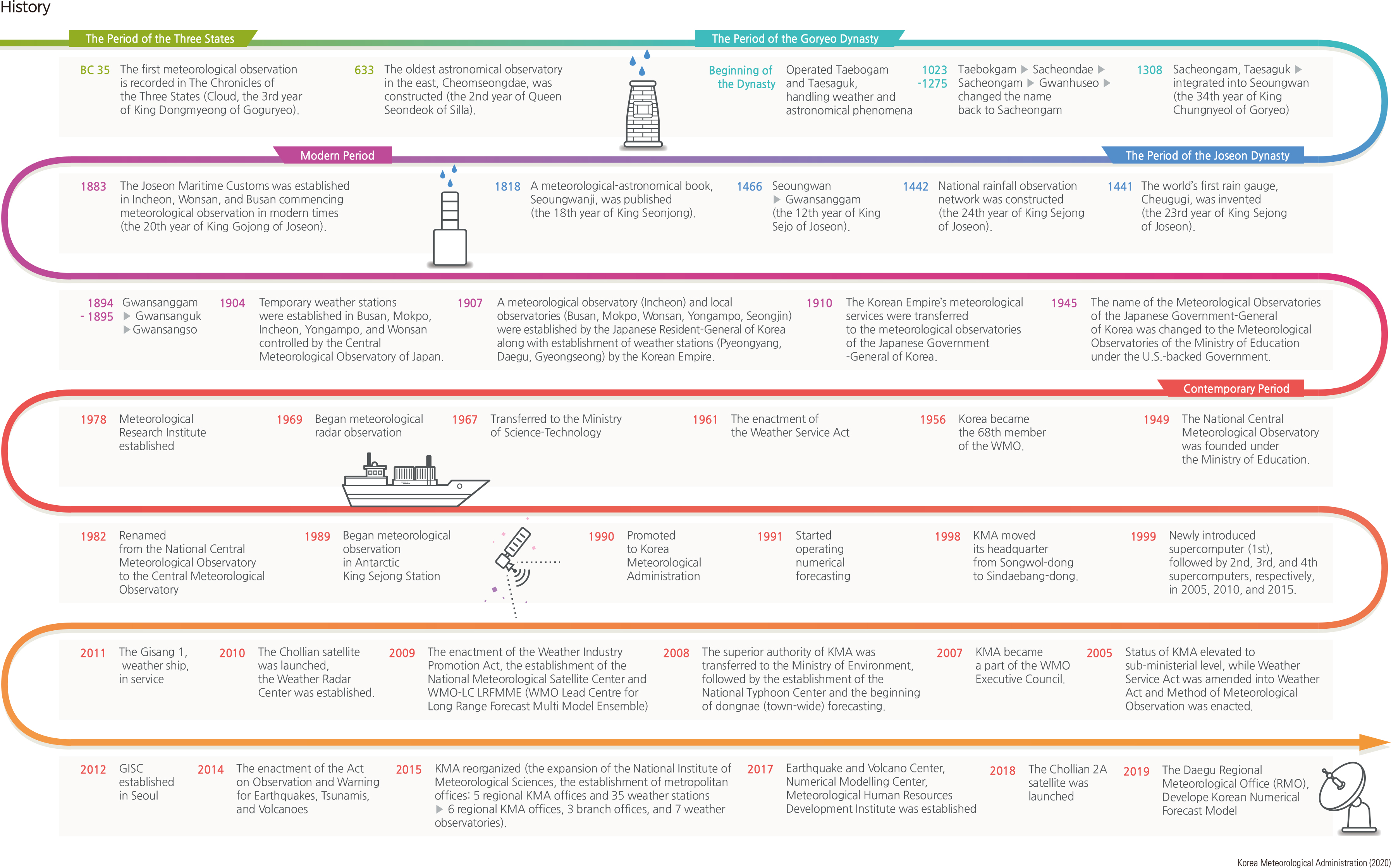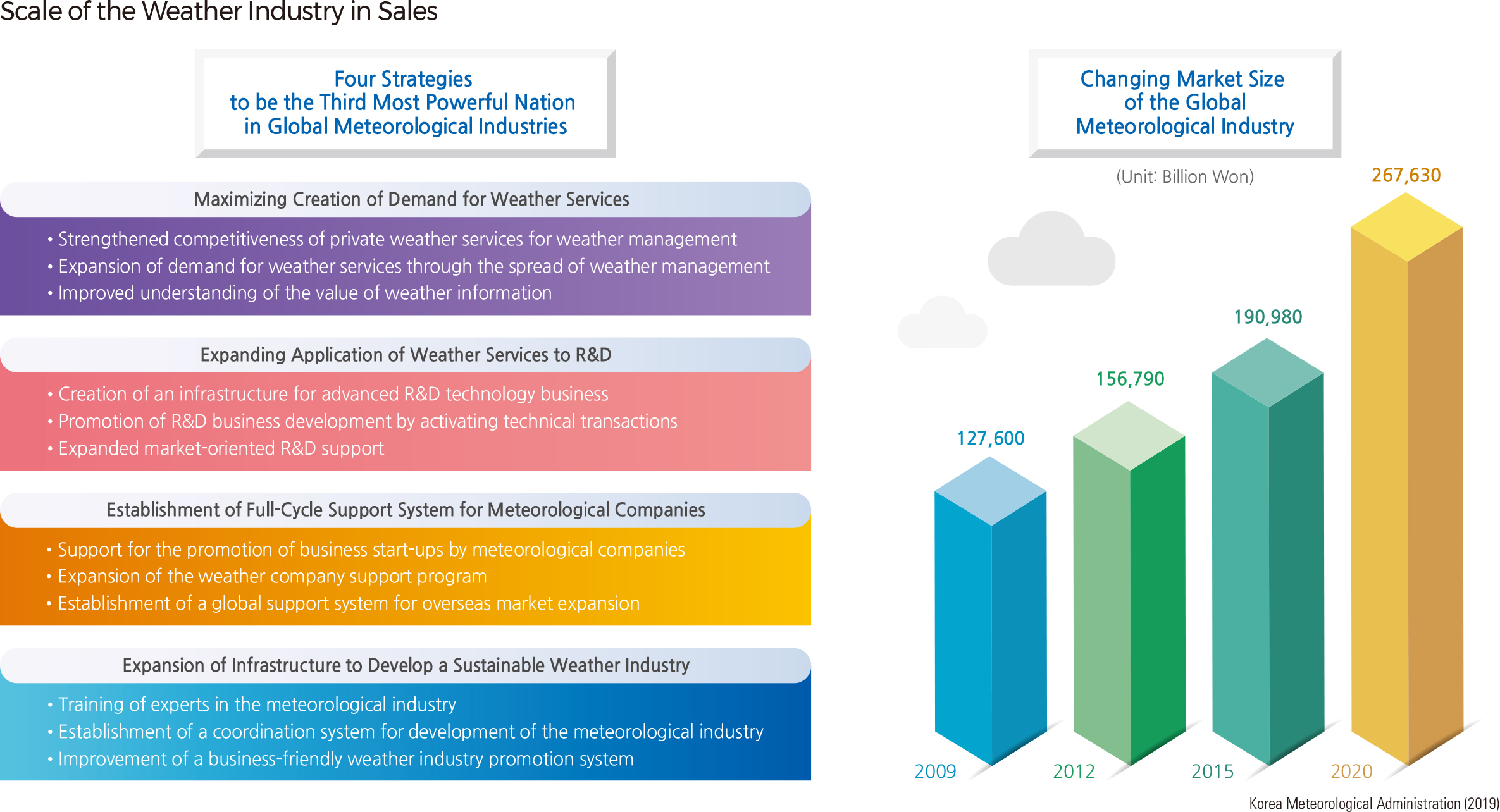English II 2020
According to Samguk yusa, Korea’s meteorological history began with Hwanung, the legendary founder of Gojoseon, who descended from heaven with 3,000 followers to Sindansu in Taebaeksan to rule the world, along with his ministers of cloud, rain, and wind, who were capable of controlling the basic weather elements. Since the period of the Three Kingdoms, there have been numerous meteorological observation records. During the Goryeo dynasty, Seoungwan was established and operated as a government office dealing with weather and astronomical phenomena. During the Joseon dynasty, great progress was made in meteorological observations. The world’s first rain gauge, Cheugugi, was invented (1441), and a rainfall observation network was built on a national scale. The instruments for measuring the water level of the Cheonggyecheon and the Hangang were invented. There were also instruments for observing wind direction.
In the 19th century, meteorological observation was modernized when P. G. Von Moellendorf, a German appointed as the Inspector General of Marine Customs by King Gojong, the Emperor of the Joseon dynasty, installed meteorological instruments at Incheon Port and Wonsan Port in 1884, and another at Busan Port in 1887.
Beginning in 1904, five temporary weather stations were established in Busan, Mokpo, Incheon, Yongampo, and Wonsan, followed by stations at Seongjin and Jinnampo. These stations formed a meteorological network that laid the foundation for the modern weather service. In 1907, eight weather stations were established in Gyeongseong (currently Seoul), Pyeongyang, Yongampo, Daegu, Busan, Mokpo, Wonsan, and Seongjin. These stations began forecasting the weather as soon as standards for forecasting and storm warnings were established. Additional weather stations were installed in Gangneung (1911) and Unggi/ Junggangjin (1914).
In 1949, the Central Meteorological Office was founded. The period from 1949 until the 1960s saw the organization of laws and improvement in Meteorological Communication (METCOM), which enabled the establishment of an immediate exchange system for meteorological observations and data analysis. All these efforts paved the way for international cooperation.
In 1970s, the contemporary meteorological administration and technology system, including digitalization, satellite, and radar-related observation, were built. During the 1980s, Korea’s weather service expanded the meteorological network, modernized equipment, implemented local forecasting, objectified forecast data, digitalized the weather service, and provided climate data and industrial meteorological information.
In 1990s, the Korean Meteorological Administration (KMA) established the foundation for advanced meteorological observations. KMA established an automatic weather station (AWS) network and a weather radar network, secured a supercomputer, released a weekly forecast every day, implemented a six-hour forecast system, established KMA certified programs at colleges, and operated a weather forecaster training curriculum for foreigners.
In the 21st century, Korea has developed forecasting technologies, expanded meteorological monitoring systems, strengthened meteorological services, established a nation-wide automatic weather system, strengthened the foundation for meteorological technical innovation, expanded weather-related research and development, and promoted weather-related cooperation with foreign countries. In 2001, Korea established a long-term vision (MT Vision 2025) to create an institutional basis for promoting the development of meteorological technology. This long-term vision presented a national vision for meteorological technology and set the basis for meteorological policy to realize the vision.
The market size of Korea's weather industry is growing steadily and was valued at 480 billion won in 2018. The weather industry has become a new growth engine for the country. Demand for the weather industry has increased. The KMA has established a life-cycle support system to strengthen the capabilities of weather enterprises and promotes various policies to revitalize the weather industry, such as supporting the expansion of domestic and foreign markets and expanding research and development and commercialization of market-oriented weather services.
The Weather Industry Promotion Act aims to support and foster the weather industry to lay the foundation for the development of the weather industry and strengthen its competitiveness, thereby contributing to the development of the national economy. The KMA formulates and implements a master plan for the advancement of the weather industry every five years to achieve the purposes of this Act in a systematic and efficient manner.
After the completion of the first plan for the promotion of the weather industry (2011–2015), Korea entered the growth phase of the weather industry through support and the establishment of a foundation for its activation. The second plan (2016–2020) is devoted to spreading the value of the weather industry by strengthening the capabilities of weather companies to become a global weather industry powerhouse. |

